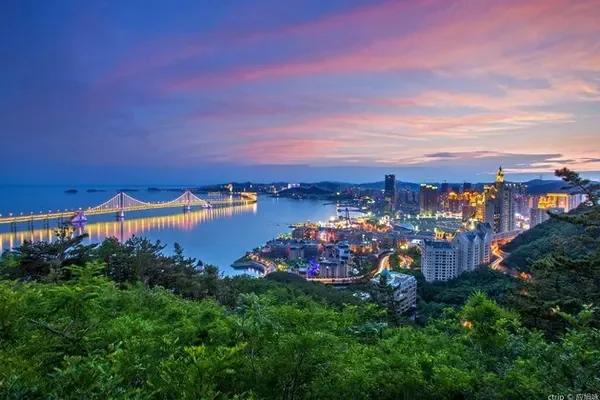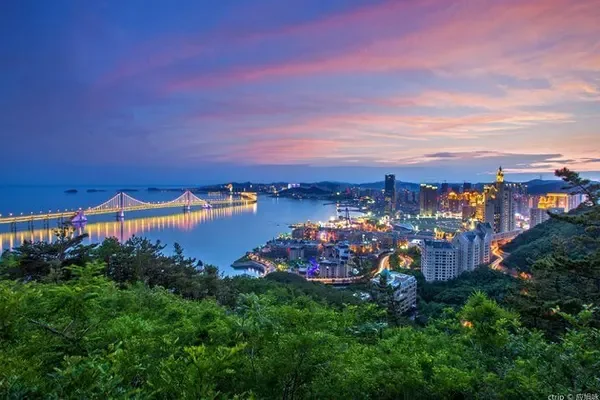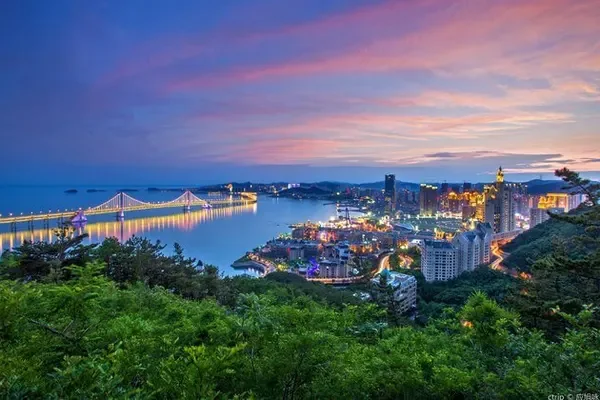China is so big, I want to visit it. Take you to a place you have been or have not been to.
When people enter the Forbidden City, it is like Grandma Liu entering the Grand View Garden
Undoubtedly, the Forbidden City has a special status in the hearts of the common people. With more and more feature films and materials with the theme and theme of the Forbidden City, people's curiosity is declining, but they still cannot resist the temptation to enter the Forbidden City.

According to the ancient Chinese astrological theory, Ziweiyuan (i.e. the North Star) is located in the mid-heaven, which is the residence of the emperor of heaven, corresponding to heaven and man, so the residence of the emperor is called the Forbidden City. After Ming Chengzu Zhu Di moved his capital to Beijing, he built this palace city, and it was completed in the eighteenth year of Ming Yongle (1420). By 1924, Emperor Xun Puyi was expelled from the palace, and a total of 24 emperors had lived here and ruled the whole country. On the National Day of the Republic of China in 1925, a grand building ceremony was held at the square in front of Qianqingmen, and a telegram was sent across the country to announce the official establishment of the Palace Museum. On the first day of the opening, thousands of people in Beijing were vying to see it, and the traffic was jammed.
It should be said that 60 yuan (2019) tickets for the Forbidden City is really cheap, and the Treasure Museum is only 10 yuan. Beijing is not short of money, so the tickets for scenic spots are very cheap, worthy of the common people.
Everyone lined up at the Meridian Gate early.

The Meridian Gate is the main gate of the Forbidden City, located on the north-south axis of the Forbidden City. This gate faces the sun in the middle, and it is located at Meridian, so it is called Meridian Gate.
After entering the Meridian Gate, the Forbidden City is nothing more than a "sleeping in the front and sleeping in the back", with the highest level of buildings along the central axis. It can be said that the bricks and tiles of the Forbidden City follow the feudal hierarchy, reflecting the supreme authority of the emperor.

The "former dynasty" centered on the three halls of Taihe, Zhonghe, and Baohe, and there were Taihe Gate and Inner Jinshui Bridge in front of the Hall of Supreme Harmony.
(Inner Jinshui Bridge)

(Taihe Gate)


The Hall of Supreme Harmony, the largest existing wooden structure hall in China, is the largest and highest-level building in the Forbidden City, commonly known as the "Golden Luan Hall" by the people. After it was completed, it was burned down many times and rebuilt many times. The present hall was rebuilt in the thirty-fourth year of Emperor Kangxi of the Qing Dynasty (1695). On the roof of the hall with load-bearing eaves and verandas, sits a 3-story white marble platform base, with golden dragon and seal color paintings, 11 immortals and beasts on the roof, 11 bays, and five rooms deep, all of which adopt the highest shape. There is a square in front of the hall, which can accommodate tens of thousands of people to worship and celebrate.
(Taihe Gate and Front Square)

The Hall of Supreme Harmony is not the place where the emperor goes to court. It is mainly used to hold various ceremonies, such as the emperor's ascension to the throne, the emperor's wedding, the appointment of the empress, and the appointment of generals. Civil and military congratulations and banquets to princes and ministers are rarely used in practice.
(Hall of Supreme Harmony)



The Hall of Preserving Harmony is 9 rooms wide and 5 rooms deep. Baohe means that the mind must be single-minded to maintain the harmony in the universe, so as to have a happy life and peace, and the world is peaceful.

In the middle of the steps behind the Hall of Preservation and Harmony, there is a royal road stone carved with clouds, dragons, sea water and cliffs. Nine dragons are carved, commonly known as big stone carvings, which are the largest stone carvings in the Forbidden City. The whole stone is 16.57 meters long, 3.07 meters wide, 1.70 meters thick, and weighs about 250 tons. It was originally a carving relic of the Ming Dynasty and was re-carved during the Qianlong period of the Qing Dynasty.

The Hall of Zhonghe is located between the Hall of Supreme Harmony and the Hall of Preserving Harmony. It is square, with 3 rooms in width and 3 rooms in depth. For the emperor's personal sacrifices, such as offering sacrifices to the Temple of Heaven and the Temple of Earth, the emperor read the blessings at the Hall of Zhonghe the day before, and inspected the seeds and agricultural tools here before holding the plowing ceremony at the Agricultural Altar. The name of the hall is taken from "Book of Rites · The Doctrine of the Mean": "The one who is in the middle is the foundation of the world; the one who is in harmony is the way of the world", which means to promote the "dao of the mean".

The three halls are all built on three-story platforms.
The northern half is the "back bedroom", centered on the three palaces of Qianqing, Jiaotai, Kunning, the six east and west palaces and the imperial garden.
(Qianqing Gate and the front square)

Qian is the sky, Qianqing Palace is the main hall of the inner court of the Forbidden City, the head of the Hou San Palace, located in the Qianqing Gate. It is 9 rooms wide and 5 rooms deep. The fourteen emperors of the Ming Dynasty and the Shunzhi and Kangxi emperors of the Qing Dynasty all used Qianqing Palace as their bedroom. He also received foreign envoys here.


Kunning Palace has 9 corridors with a wide surface and 3 corridors with a depth. It was the central palace and bedroom of the queens of the Ming and Qing Dynasties. In the Qing Dynasty, there were not many queens who actually lived in the Kunning Palace. Most of the queens had their own residences in the East and West Palaces. The emperor lived here for two days when he got married, and then lived in other palaces.

Jiaotai Hall is located between Qianqing Palace and Kunning Palace. Qianqing Palace represents masculinity, and Kunning Palace represents feminine. The plane is square, with 3 rooms in width and 3 in depth. It is smaller than the Hall of Central Harmony, and it is the place where the empress receives congratulations.
(In the thirteenth year of Qianlong (1748), the twenty-five jade seals representing the imperial power were stored in the Jiaotai Hall. The seals were placed in a treasure box and covered with yellow silk)


(Kunning Palace, Jiaotai Hall)

The three halls are all built on a single-layer platform.
The Grand View Garden that Grandma Liu entered was, after all, a garden in the south of the Yangtze River, and there are many things to enjoy. The Forbidden City in Nuoda looks like a garden except for the back garden, and there is not even a single grass in the forecourt and harem, let alone trees. Some of the tourists who came in wholeheartedly were resting in the coolness within less than an hour.

(Royal Garden)

Many tourists are very interested in the "East Palace" and "West Palace" on both sides of the central axis. The emperors and concubines are a little curious about living here, and they have watched too many popular Gongdou dramas. In addition, the east and west palaces are more lifelike.

(Yanxi Palace)

The "Treasure Hall" and the Clock Hall that display the treasures and cultural relics of the Forbidden City need to purchase tickets separately, which are not expensive, but if there are many people queuing up, you can only watch the "People's Exhibition".

Of course, there are treasures in the Forbidden City, but there are also "fakes", that is, this piece of wood on the Nine Dragon Wall. In the thirty-seventh year of Qianlong (1772), the Ningshou Palace was rebuilt and this five-clawed golden dragon and nine dragon wall screen wall (Zhaobi) was fired. The Nine Dragon Wall is made of the strictest glazed tiles and then spliced together. Glazed tiles are bright and durable for a long time, but there is such a small piece that reveals the "natural color of wood" over time. It is speculated that if such a small piece of glazed tile is broken, it will be difficult to keep the color consistent if it is fired again, or the construction period will not be in time. So use nanmu lacquer color to "get away with it". Whether it was done by the supervisor or cheated the supervisor, in short, there is no record, and there are many legends in the market. It wasn't until more than 200 years later that Puyi was expelled from the palace and published in the tabloids.





